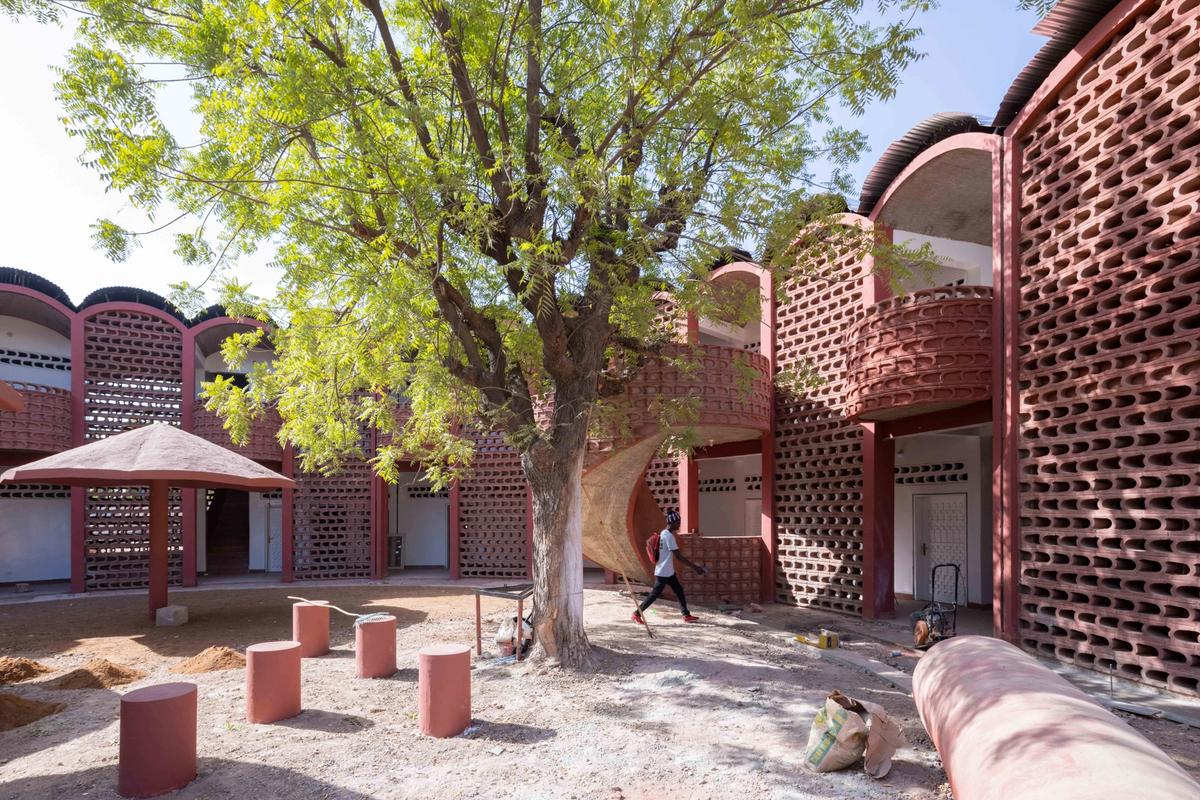Around three years ago, Nicholas Fox Weber, the director of the Josef and Anni Albers Foundation, was standing in the paediatric unit of Tambacounda Hospital in Senegal, looking at a broken incubator.
“It was basically a refrigerator tray with a light bulb hanging over it, with three babies squeezed together on it,” he says. “We quickly got a new incubator from Dakar, but then I thought, ‘Why is this necessary in our world with all this privilege? I’m in the art world, a world where people are worrying about which gallery is representing Jeff Koons for however many millions of dollars of art. Why is it necessary to have this pathetic hospital?’”
Three years, one design competition and multiple trips later, a new maternity and paediatric hospital is being unveiled this month.
The German architect Manuel Herz, who has written extensively on African Modernism, won the competition, chiefly because he chose to visit Tambacounda before submitting his design. “Manuel paid such attention to the needs of the people there, to the reality of living in 45 degree heat,” says Fox Weber, who first visited Tambacounda in 2000.
Though Herz’s practice had not previously been influenced by the Albers’s work, “he incorporated what I would call ‘Albersian’ thinking in a lot of what he did”, Fox Weber says. The white wooden hospital doors, for instance, are based on a Bauhaus-period design of Anni Albers.

An aerial view of the new hospital Photo: Iwan Baan. Courtesy of the Josef and Anni Albers Foundation and Le Korsa
“Manuel has the qualities that they cared about. He has a tremendous sense of rhythm and a great knowledge of materials. He designed the roof structure so that it traps heat, and the building doesn’t require air conditioning,” Fox Weber says. “Anni and Josef often talked about minimal needs for maximum effect. And I would say that the hospital exemplifies that.”
Throughout the process, Herz worked in close collaboration with local leader Dr Magueye Ba, employing craftsmen and engineers from Tambacounda and the surrounding villages to build the 150-bed hospital.
The new, snaking building, which is just seven metres in width, joins the paediatric and maternity wings, as well as providing toilets for the families of patients. “Sometimes Manuel’s concerns were purely practical, but he immersed himself in the culture of Tambacounda, the way that the Alberses did in the culture of Mexico,” Fox Weber says. “He discovered that families were camping out at the hospital, so he incorporated toilets for the families of patients. This is the sort of thing I know that Anni and Josef would have been very pleased about. They focused on the realities of life.”
Herz’s “great sense of economy” was another winning factor. “This is not an expensive building for what it is,” says Fox Weber, who estimates the project to have cost less than €2m. The new maternity and paediatric unit at Tambacounda Hospital is financed with funds raised by the non-profit Le Korsa, which Fox Weber says is supported substantially by the Albers Foundation. He adds that gallery sales have been important for funding, as “it certainly helps us immensely that we've done so well with David Zwirner. It puts us in a much stronger position to undertake projects like this".
The foundation and Le Korsa—the philanthropic arm of the foundation that Fox Weber established in 2005—is now trying to raise an additional $500,000 to building housing for hospital staff. The building’s design is based on a print by Anni Albers.
As Fox Weber points out: “It can be hard to attract doctors and nurses to Tambacounda. It’s remote and it’s terribly hot, even by Senegalese standards. The solution, in part, would be to have really nice housing for the staff.”
In a bid to raise awareness and funds, Herz will present an installation, The Many Lives of Tambacounda, at the Venice Architecture Biennale, which opens without guests later this month.


